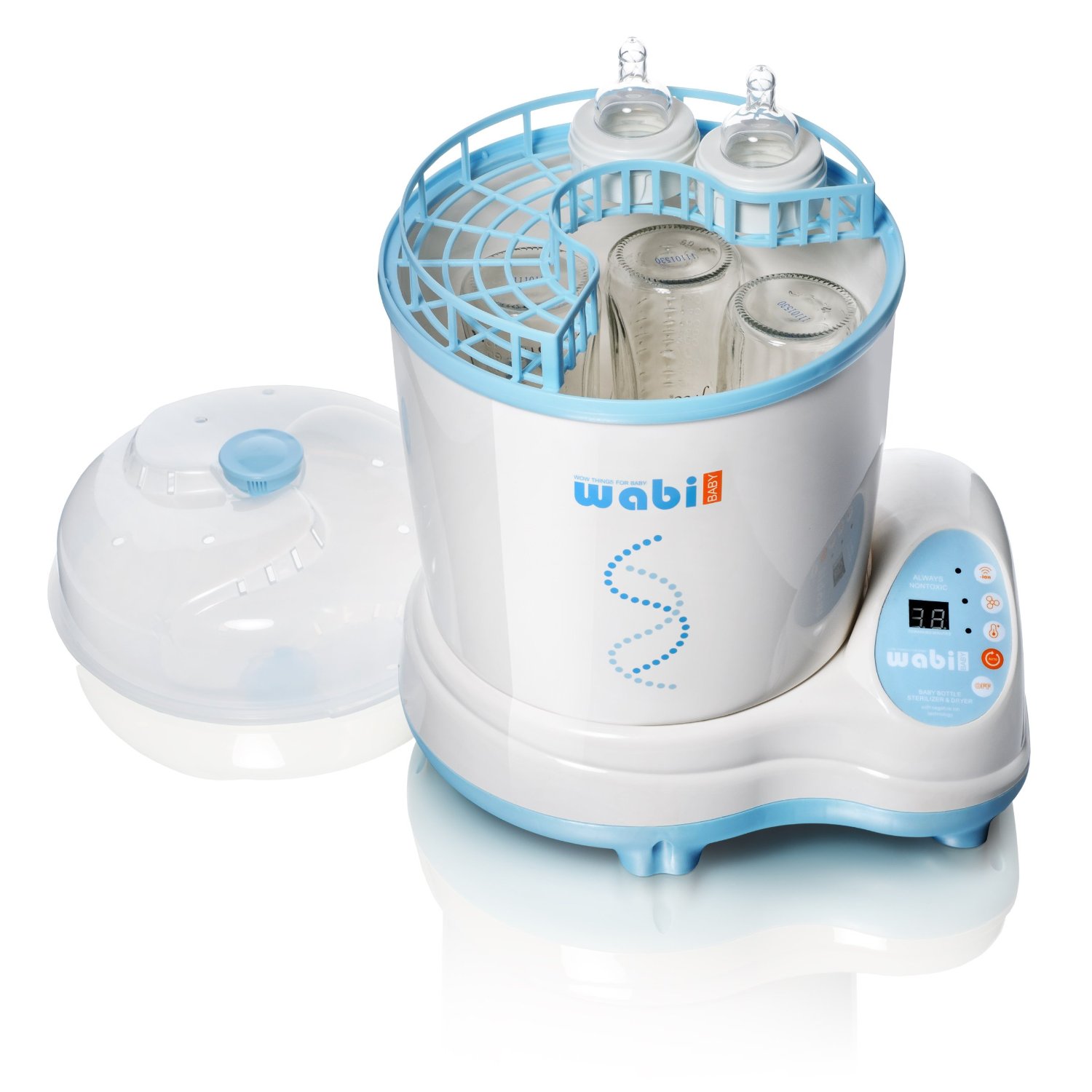
Title: Exploring the different types of baby bottle sterilizers: UV, steam and microwave
Introduction
Sterilization of baby bottles is essential to ensure the safety and hygiene of infant feeding equipment. Various sterilization methods are available, each offering unique benefits and considerations. In this article, we'll look at three common types of baby bottle sterilizers: UV-C, steam, and microwave options, examining their characteristics, effectiveness, and suitability for different needs.
UV-C sterilizers
UV-C sterilizers use ultraviolet (UV) light to remove bacteria, viruses and other pathogens from baby bottles and accessories. These sterilizers typically consist of a chamber in which items are placed and ultraviolet light is emitted to disinfect surfaces. UV sterilizers provide fast sterilization times, typically completing the process in 5-10 minutes. They are effective against a wide range of microorganisms and do not require the use of water or chemicals. However, UV-C sterilizers can be more expensive initially and require periodic replacement of the UV lamps to achieve optimal performance.
Steam Sterilizers
Steam sterilizers, also known as electric sterilizers, use hot steam to disinfect baby bottles and accessories. These sterilizers have a chamber in which items are placed and water is heated to create steam, which effectively kills bacteria and germs. Steam sterilizers are convenient and effective, with sterilization cycles typically lasting between 8 and 15 minutes. They are versatile and can sterilize various types of baby feeding equipment, including bottles, pacifiers and breast pump parts. However, steam sterilizers require access to electricity and regular descaling to prevent mineral buildup in the heating element.
Microwave Sterilizers
Microwave sterilizers are compact containers designed to sterilize baby bottles using steam generated by microwave heating. These sterilizers typically consist of a base unit with a removable tray for bottles and accessories, and a lid to retain steam during the sterilization process. Microwave sterilizers are convenient and portable because they can be used with any microwave oven. The sterilization cycle usually takes from 4 to 8 minutes, depending on the power of the microwave oven. However, microwave sterilizers may have limited power compared to other types of sterilizers and may not be suitable for all types of baby bottles or accessories.
Recommendations for choosing a sterilizer
When choosing a baby bottle sterilizer, there are several factors to consider:
Effectiveness: Ensure that the sterilizer effectively removes harmful bacteria and pathogens from baby bottles and accessories.
Convenience: Consider ease of use and maintenance, as well as speed of sterilization cycles.
Compatibility: Check that the sterilizer is compatible with the types and sizes of baby bottles and accessories you intend to sterilize.
Cost: Estimate the initial cost of the sterilizer, as well as any ongoing costs such as spare parts or accessories.
Safety: Choose a sterilizer that meets safety standards and has built-in features to prevent accidents or overheating.
Conclusion
This article provides an overview of UV, steam and microwave sterilizers for baby bottles, highlighting their features, effectiveness and recommendations for choosing the right option.






